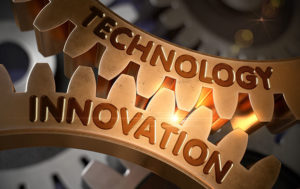The future is now, or at least it is coming soon. Today’s technological developments are looking very much like what once was the domain of science fiction. Maybe we don’t have domed cities and flying cars, but we do have buildings that reach to the heavens, and drones that soon could deliver our packages. Who needs a flying car when the self-driving car — though still on the ground — is just down the road?
The media often notes the comparisons of technological advances to science fiction, and the go-to examples cited are often Star Trek, The Jetsons and various 1980s and 90s cyberpunk novels and similar dark fiction. In many cases, this is because many tech advances actually are fairly easy comparisons to what those works of fictions presented.
On the other hand, they tend to be really lazy comparisons. Every advance in holographic technology should not immediately evoke Star Trek’s holodeck, and every servant-styled robot should not immediately be compared to Rosie, the maid-robot in The Jetsons.
Cool the Jetsons
The Jetsons is one of the cultural references cited most often when new technology emerges. Perhaps this is because so many of today’s tech reporters viewed the shows in syndication or reruns — or perhaps it’s just because the comparisons are so easy to make.
Comedian John Oliver mocked TV news programs for their frequent references to The Jetsons when reporting developments in flying cars, video phones and other consumer technologies. Yet, the Smithsonian magazine several years ago published a piece titled “50 Years of the Jetsons: Why The Show Still Matters,” casting it as part of the golden age of futurism.
Likewise, Diply.com noted “11 Times The Jetsons Totally Predicted The Future,” while AdvertisingAge asked, “How Much of the Jetsons’ Futuristic World Has Become a Reality?”
First, the show shouldn’t matter. It was a cartoon and predicted the future about as accurately as The Flintstones depicted life in the Stone Age. None of The Jetsons’ future tech predictions were revolutionary.
Flying cars, flat panel TVs, video phones and robot maids often are called out — yet all of those innovations were envisioned decades before the TV show hit the airwaves. Science fiction writer H.G. Wells suggested we might have small personal aircraft in his work The Shape of Things to Come — and we’re not much closer to having them now than when he came up with the idea in 1933.
Flat panel TVs, on the other hand, were in development in the early 1960s around the same time the show was on the air, and were envisioned much earlier.
As for video phones, the concept of videotelephony initially became popular in the late 1870s, and Nazi Germany developed a working system in the 1930s. Of course, it is likely more uplifting to compare today’s modern tech to The Jetsons than to give the Nazis credit.
As for the robot maid, let’s not forgot that “robots” were introduced in the 1920 play Rossum’s Universal Robots, by Czech writer Karel Čapek, which told of a class of specially created servants. They may not technically have been machines, but they were there to do the jobs people didn’t want to do.
Boldly Going the Same Place
Star Trek is another often-referenced show whenever the next cool technology looks anything like its holodeck or replicator technology.
Perhaps this is because it is easy to compare today’s 3D printers to replicators, even if the principles underlying them are entirely different. It is equally easy — lazy, actually — to suggest that holographic technology eventually could — one day in the far future — create a holodeck like the one on Star Trek.
The problem is that beneath the surface, much of the technology seen on the show is different from our current technology and really borders on the impossible. The replicator breaks things down not to the molecular level but to the atomic level.
That is as unlikely ever to become reality as the show’s transporter technology — but that didn’t stop the comparisons to the show’s magic means of “beaming” when German scientists created a system of scanning an object and recreating it elsewhere.
That isn’t quite the same. The German invention basically combines 3D printing with a fax machine. That is hardly deserving of a “Beam me up, Scotty” reference — even though hardcore fans will happily tell you that exact phrase never has been uttered in any of the TV shows or movies.
Snow Crash and Burn
Many of today’s Internet-based technologies — including 3D and virtual reality, as well as various online worlds — are compared to similar tech in the works of William Gibson, Bruce Sterling and Neal Stephenson.
In the past 20 years, there have been many suggestions that various worlds that have emerged online — from Worlds Inc. in 1995 to Second Life in 2005 — were close to a “real life Snow Crash,” the book that introduced readers to the “Metaverse.”
The Metaverse is an online world populated with 3D avatars who can mingle, chat and engage with one another while their real-life users are in distant places around the globe.
Yes, that does sound much like today’s online video games and the virtual world Second Life. The amazing part in these comparisons isn’t that as a science fiction writer and visionary, Stephenson was so right about where we were headed — but rather than anyone would gleefully laud the fact that we’re closing in on that reality!
The worlds presented in Snow Crash and the works of Gibson and Sterling aren’t exactly utopias. These guys didn’t write stories set in perfect worlds free of crime, disease and war. Rather, they are worlds where criminals and giant corporations work hand in hand, as governments have fallen. People are desperate and downtrodden, and they escape to virtual realities because their real lives are awful.
Case, the main character in Gibson’s seminal book Neuromancer, is a “console cowboy” — basically a hacker by another, more creative name. The character is down on his luck, and by taking on a job no one wants, he is able to get his life back on track and get out of the game. Case’s story makes for fine reading — but he’s an antihero at best.
He’s a criminal who works for bigger criminals. Do we really want to live in such a world — where a few powerful criminals and corporations rule the world?
When executives at Facebook’s Oculus VR cite Snow Crash and the Metaverse, one must wonder what part of the vision of the future they’re excited about. It would be akin to developing a robot with true artificial intelligence and proclaiming “it’s just like the Terminator!
This might change if a film version of Snow Crash ever materializes — but, for the record, I’m happy that attempts to bring Neuromancer to the big screen have failed. We really don’t need another Gibson story to suffer the fate of Johnny Mnemonic.
Brave New World
Cyberpunk stories typically are set in worlds in which corporations control innovation, launch satellites to connect the world to spread information, and maintain private armies. That vision is a lot darker than The Jetsons and Star Trek, of course, but it also is much closer to our reality.
Are there now giant corporations that literally control how we access the Internet? Or others that have what appear to be bizarre projects to further spread their reach to remote parts of the world? Doesn’t that pretty much describe tech giants Comcast and Facebook? Or Google?
Now imagine a tech visionary who is a billionaire with a private space program, who also is developing new ways to harness solar power. There have been James Bond books and movies with such villains (see Moonraker and The Man With the Golden Gun) — but that description also fits Elon Musk. By no means am I suggesting that Musk is a Bond villain, but I’m not the only one to notice those similarities.
Then there is the fact that Musk actually bought the Lotus Esprit submarine car that was used in the film The Spy Who Loved Me for nearly US$1million. Now tell me, that isn’t something a Bond villain would do?
The big takeaway is that perhaps it is too easy to see today’s world in past entertainment vehicles and ignore the fact that much of what The Jetsons predicted was completely wrong. We don’t expect to see a flying car that can fold up into a briefcase, ever.
Likewise, teleportation and warp speed likely will remain just part of the mythos of Star Trek.
When it comes to the darker side of science fiction, we should be cautious about where we are headed. We should heed it as a portent of what to avoid — not a future we should embrace.
As for Musk, let’s just hope a super spy is on standby.






















































